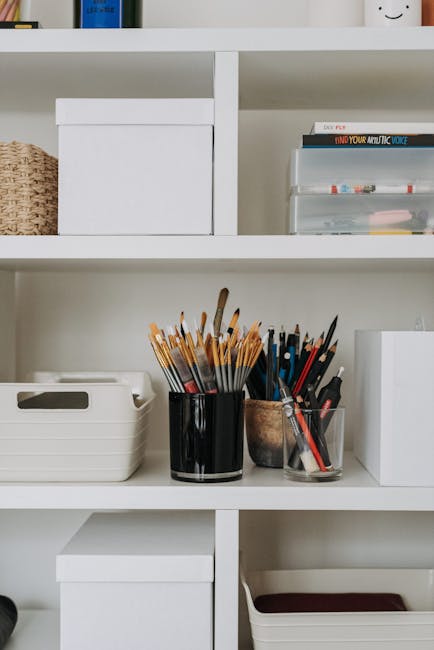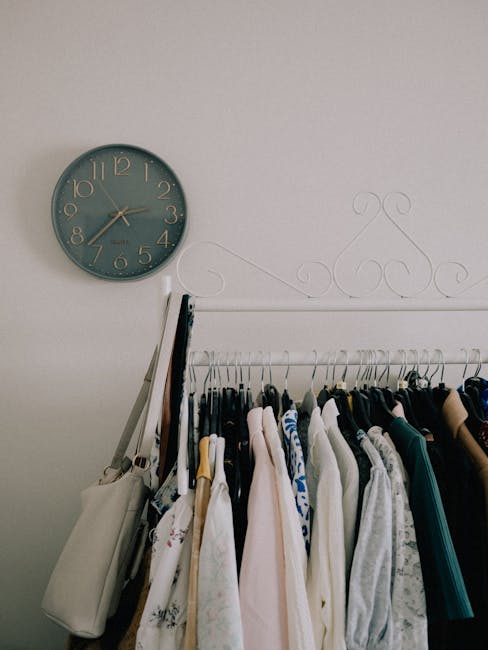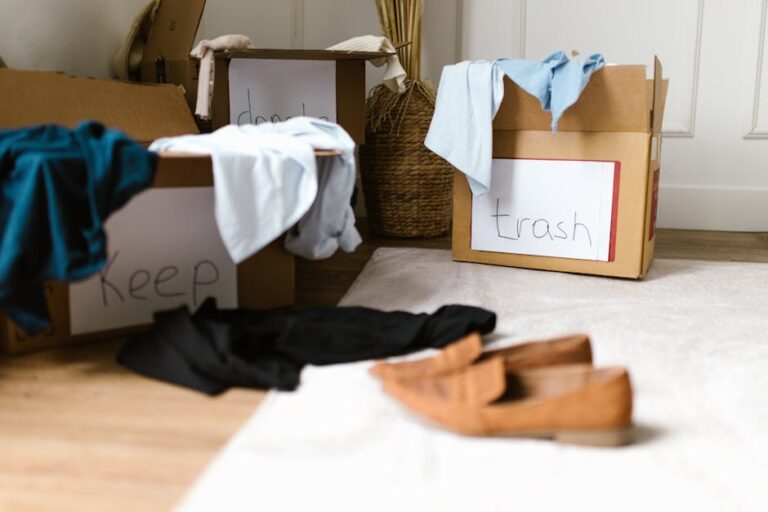
The Closet Cleanse: Creating Space and Style
Deconstructing the Declutter Myth: It’s More Than Just Removal
A closet cleanse isn’t simply about throwing clothes into donation bags. It’s a strategic process of self-assessment, style evaluation, and ultimately, creating a curated wardrobe that reflects your current lifestyle and aspirations. Many approach this task with a Marie Kondo-inspired “spark joy” mantra, which can be helpful, but falls short of addressing the core issues of overconsumption, emotional attachment to clothing, and a lack of defined personal style. True decluttering requires a multi-faceted approach that incorporates practicality, sentimentality, and a clear vision for the future.
Step 1: Preparation – Setting the Stage for Success
Before diving into the clothing abyss, preparation is crucial. Gather the necessary tools:
- Large Trash Bags: For items beyond repair or donation.
- Donation Boxes/Bags: For gently used clothing ready for a new home.
- Cleaning Supplies: Dust the closet shelves, vacuum the floor, and wipe down any surfaces.
- Full-Length Mirror: Essential for honest outfit assessments.
- Good Lighting: Ensure you can see everything clearly.
- Music/Podcast: To keep you motivated and entertained.
- Three Separate Piles/Designated Areas: Keep, Donate, Maybe/Relocate.
Crucially, dedicate enough time. Rushing the process leads to sloppy decisions and items creeping back in later. Block out several hours or even a full day, depending on the size of your wardrobe. Consider inviting a trusted friend with a keen eye for style to provide objective feedback.
Step 2: The Great Sort – Categorical Consideration
Emptying the entire closet is non-negotiable. This allows for a thorough inventory and a fresh perspective. Start by categorizing your clothing:
- Tops: T-shirts, blouses, sweaters, button-down shirts.
- Bottoms: Jeans, pants, skirts, shorts.
- Dresses: Casual, formal, workwear.
- Outerwear: Jackets, coats, blazers.
- Shoes: Sneakers, heels, boots, sandals.
- Accessories: Scarves, belts, hats, jewelry.
- Special Occasion Wear: Formal gowns, suits.
- Loungewear/Activewear: Pajamas, workout clothes.
Once categorized, begin assessing each item individually, considering the following questions:
- Fit: Does it currently fit comfortably and flatter your figure? Be honest about size changes.
- Condition: Is it free of stains, tears, holes, or significant wear? Can it be easily repaired?
- Style: Is it consistent with your current personal style? Does it reflect who you are now?
- Usage: Have you worn it in the past year? If not, why? (Consider seasonal exceptions.)
- Versatility: Can it be easily styled with other items in your wardrobe to create multiple outfits?
- Comfort: Is it comfortable to wear for extended periods?
- Duplication: Do you own multiple similar items? Can you part with the least flattering one?
- Emotional Attachment: Are you holding onto it for sentimental reasons, even though you don’t wear it?
- Future Potential: Do you envision wearing it in the near future for a specific occasion or lifestyle change?
Be ruthless. If an item fails on multiple criteria, it’s likely a candidate for donation or disposal. The “Maybe/Relocate” pile is for items that require further consideration, such as seasonal items that can be stored elsewhere or pieces that need tailoring.
Step 3: The Outfit Test – Real-World Application
The most effective way to determine the value of a garment is to try it on. Create several outfits with each piece you’re unsure about. Consider:
- Body Type: Does the garment flatter your body shape and proportions?
- Color Palette: Does the color complement your skin tone and hair color?
- Lifestyle Appropriateness: Is the outfit suitable for your daily activities and social events?
- Overall Confidence: Do you feel good and confident wearing it?
Take photos of the outfits for future reference. This helps you visualize how different pieces can be combined and identify any gaps in your wardrobe. If you still hesitate, ask yourself: “If I were shopping right now, would I buy this item?”
Step 4: Addressing Emotional Attachments – The Sentimental Challenge
Holding onto clothing for sentimental reasons is common, but it can contribute to closet clutter. Acknowledge the emotions attached to these items, but be realistic. Consider:
- Photo Documentation: Take photos of the items to preserve the memories without physically keeping them.
- Transformation: Can the fabric be repurposed into a quilt, pillow, or other sentimental object?
- Limited Keepsake Selection: Choose only a few truly significant items to keep in a memory box, not in your closet.
- Charitable Donation: Imagine someone else benefiting from the item and carrying on the positive memories.
Step 5: Reorganization – A Place for Everything
Once you’ve decluttered, it’s time to reorganize your remaining wardrobe. This is an opportunity to optimize your closet space and create a visually appealing and functional storage system.
- Color Coordination: Arrange clothing by color to make it easier to find specific items and create cohesive outfits.
- Categorical Grouping: Keep similar items together, such as all blouses in one section and all pants in another.
- Seasonal Rotation: Store out-of-season clothing in a separate location to free up space in your primary closet.
- Matching Hangers: Use consistent hangers for a more uniform and visually appealing look. Consider slim velvet hangers to maximize space.
- Shelf Organization: Utilize shelf dividers to keep stacks of clothing neat and prevent them from toppling over.
- Drawer Organization: Use drawer organizers to separate socks, underwear, and other small items.
- Vertical Space Optimization: Install shelves or hanging organizers to utilize vertical space effectively.
- Proper Folding Techniques: Learn efficient folding techniques to maximize drawer and shelf space.
- Invest in Quality Storage Solutions: Consider investing in durable and aesthetically pleasing storage containers, bins, and dividers.
Step 6: Style Assessment – Identifying Gaps and Needs
With a decluttered and organized wardrobe, it’s easier to identify any gaps or needs. Consider:
- Basic Staples: Do you have essential pieces like a classic white shirt, a well-fitting pair of jeans, and a versatile black dress?
- Color Palette Cohesion: Do your clothes generally work well together in terms of color and style?
- Lifestyle Match: Does your wardrobe reflect your current lifestyle and activities?
- Occasion Needs: Do you have appropriate attire for work, social events, and special occasions?
Create a shopping list based on these identified gaps and needs. Avoid impulsive purchases and focus on investing in high-quality, versatile pieces that will complement your existing wardrobe.
Step 7: Maintaining Your Curated Closet – Sustainable Practices
A closet cleanse is not a one-time event. Maintaining a curated wardrobe requires ongoing effort and mindful consumption.
- One In, One Out Rule: For every new item you purchase, donate or discard an old one.
- Regular Assessment: Conduct a mini-closet cleanse every season to ensure your wardrobe remains relevant and organized.
- Mindful Shopping: Before making a purchase, consider whether you truly need the item and how it will fit into your existing wardrobe.
- Care and Maintenance: Properly care for your clothing to extend its lifespan.
- Embrace Minimalism: Challenge yourself to live with less and focus on quality over quantity.
- Stay Informed: Continuously educate yourself about sustainable fashion practices and ethical brands.
- Resist Trends: Focus on timeless pieces that reflect your personal style rather than fleeting trends.
By embracing these practices, you can maintain a curated and sustainable wardrobe that reflects your individual style and simplifies your life. The closet cleanse is not just about creating space; it’s about creating a more conscious and intentional relationship with your clothing and ultimately, with yourself.

